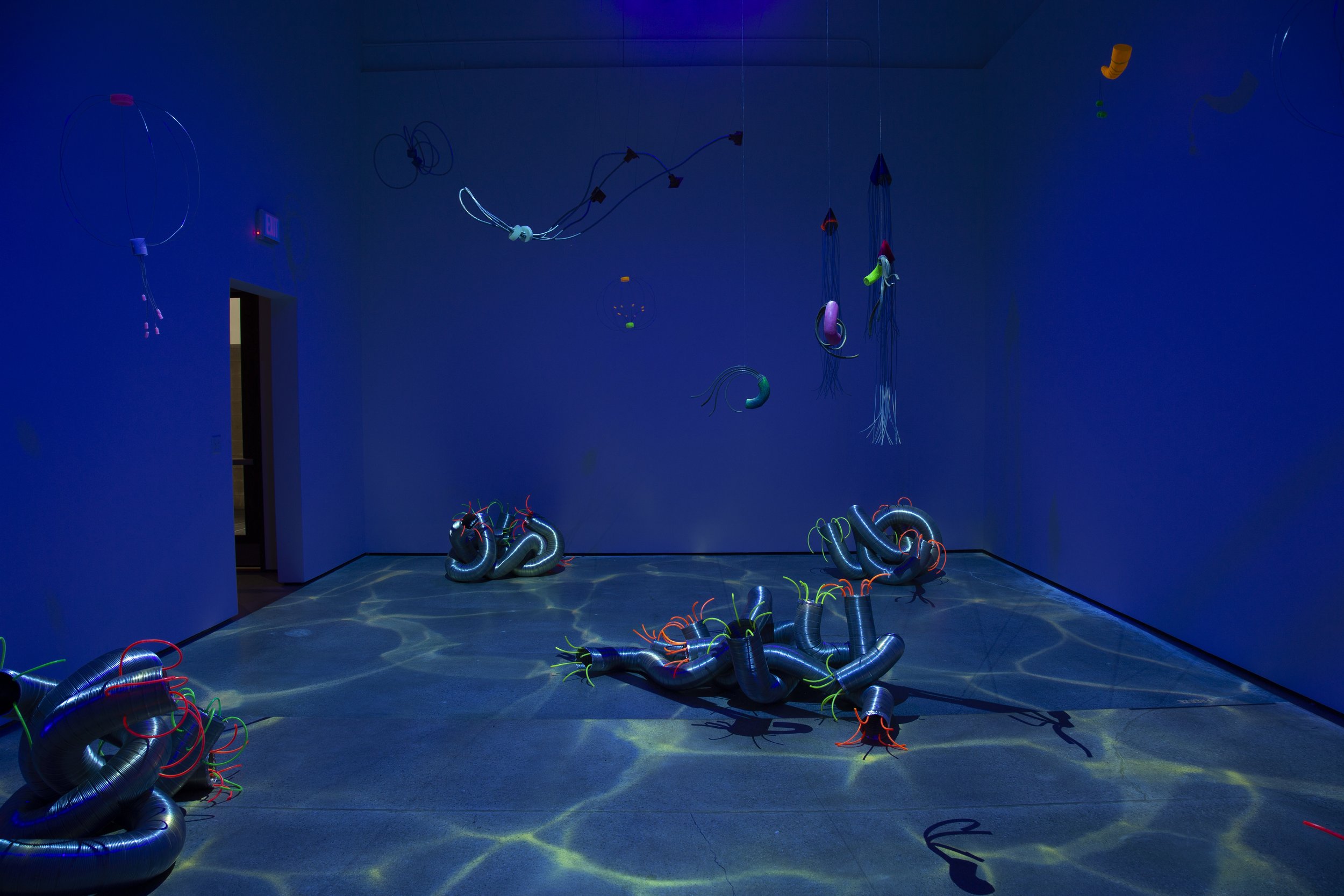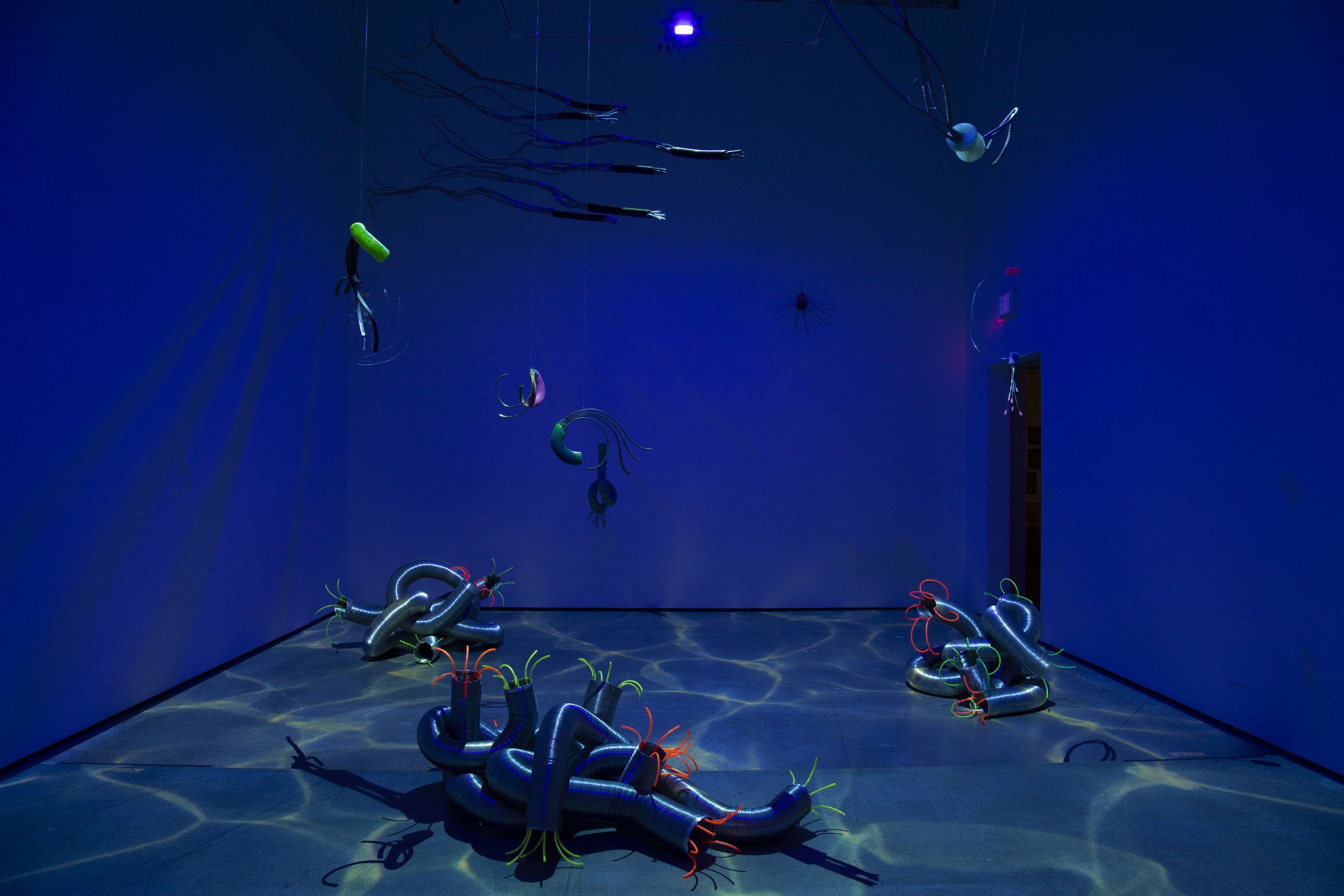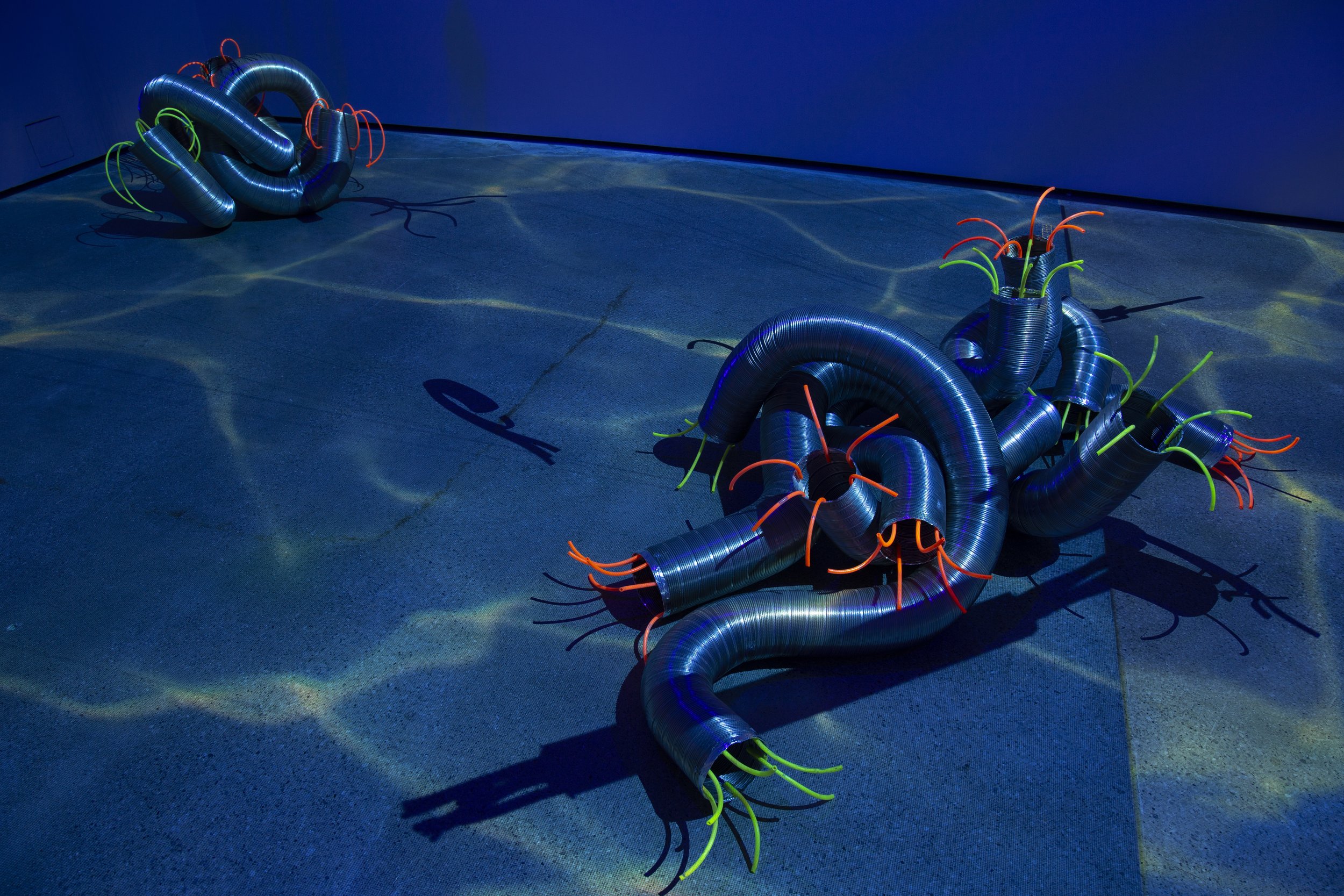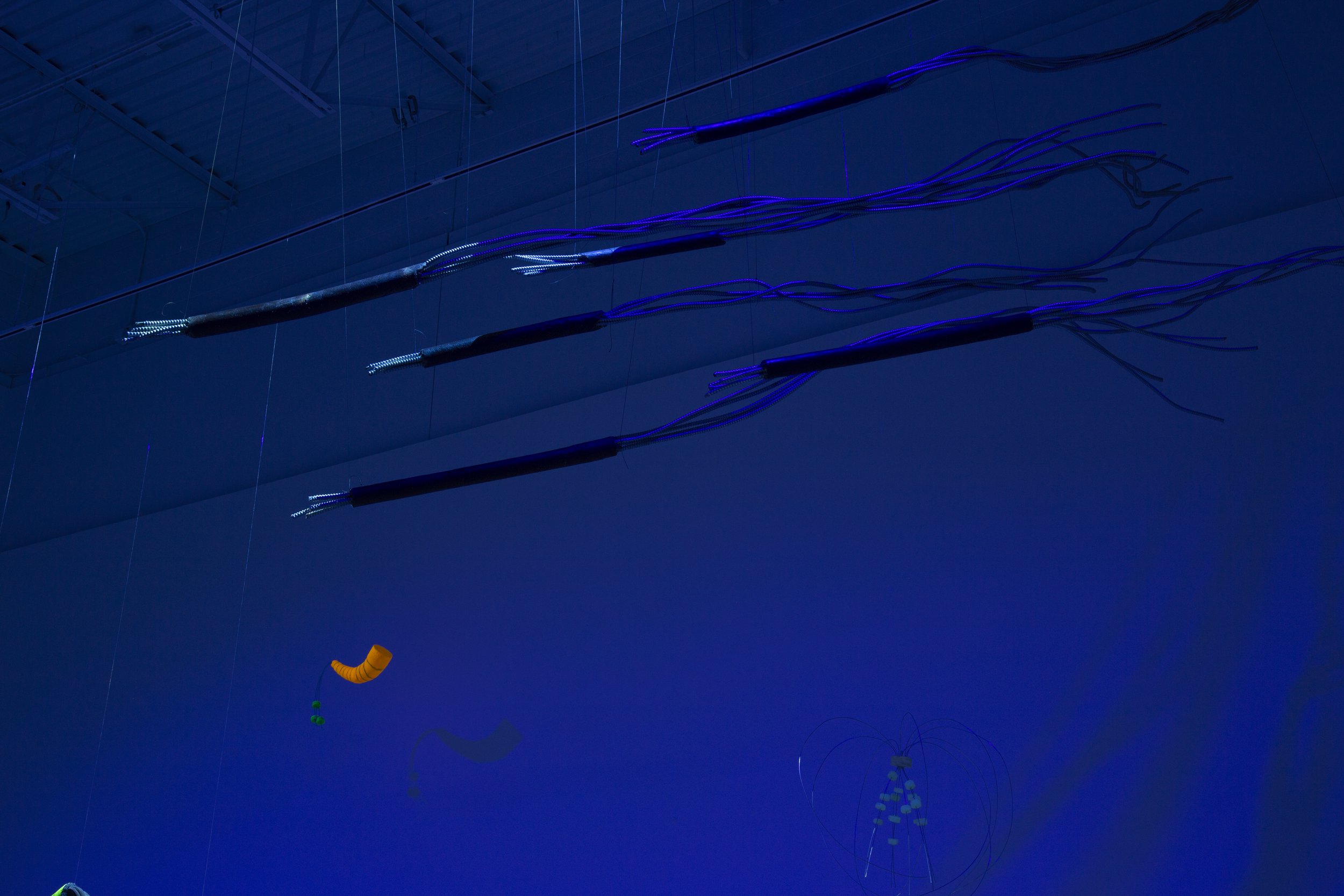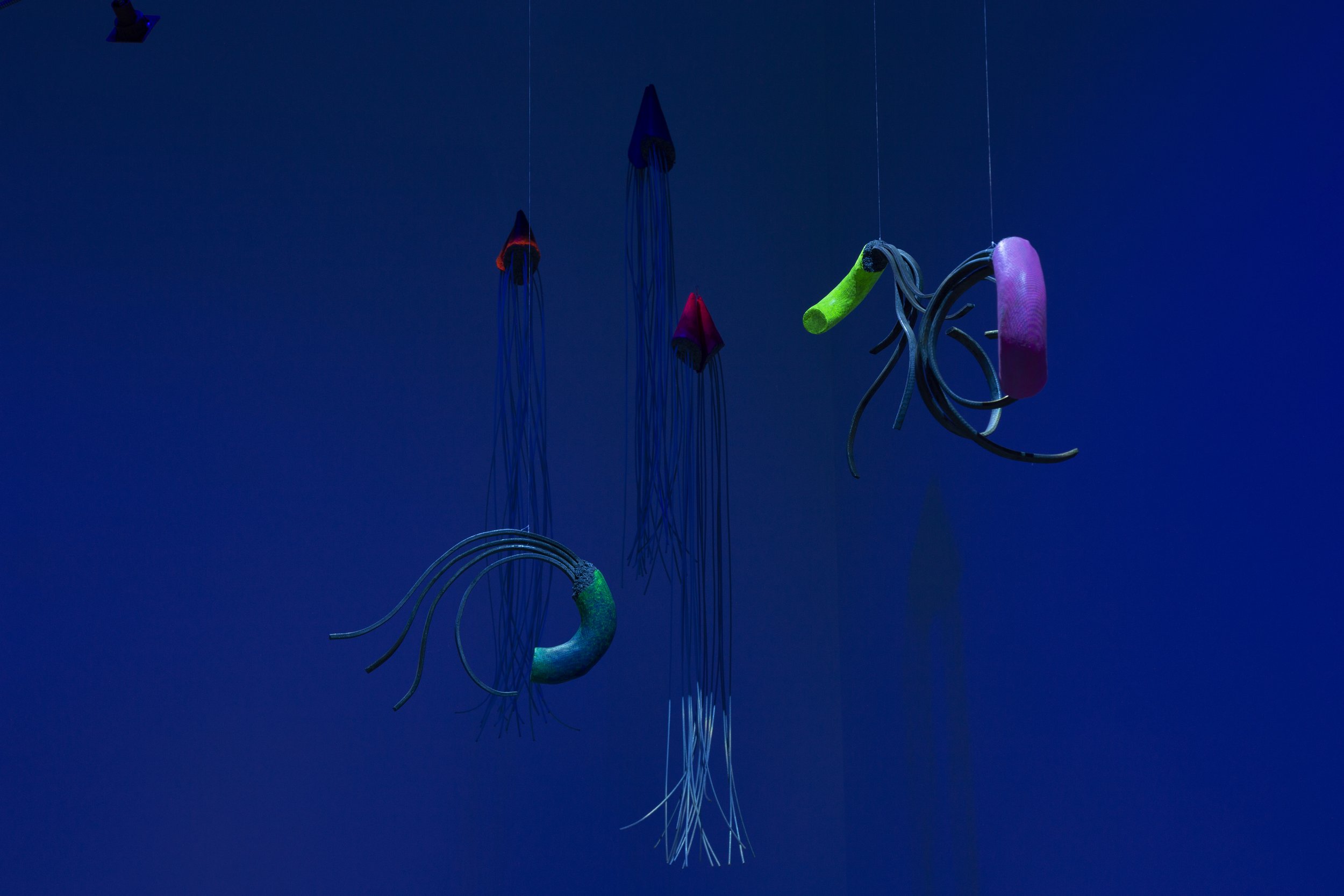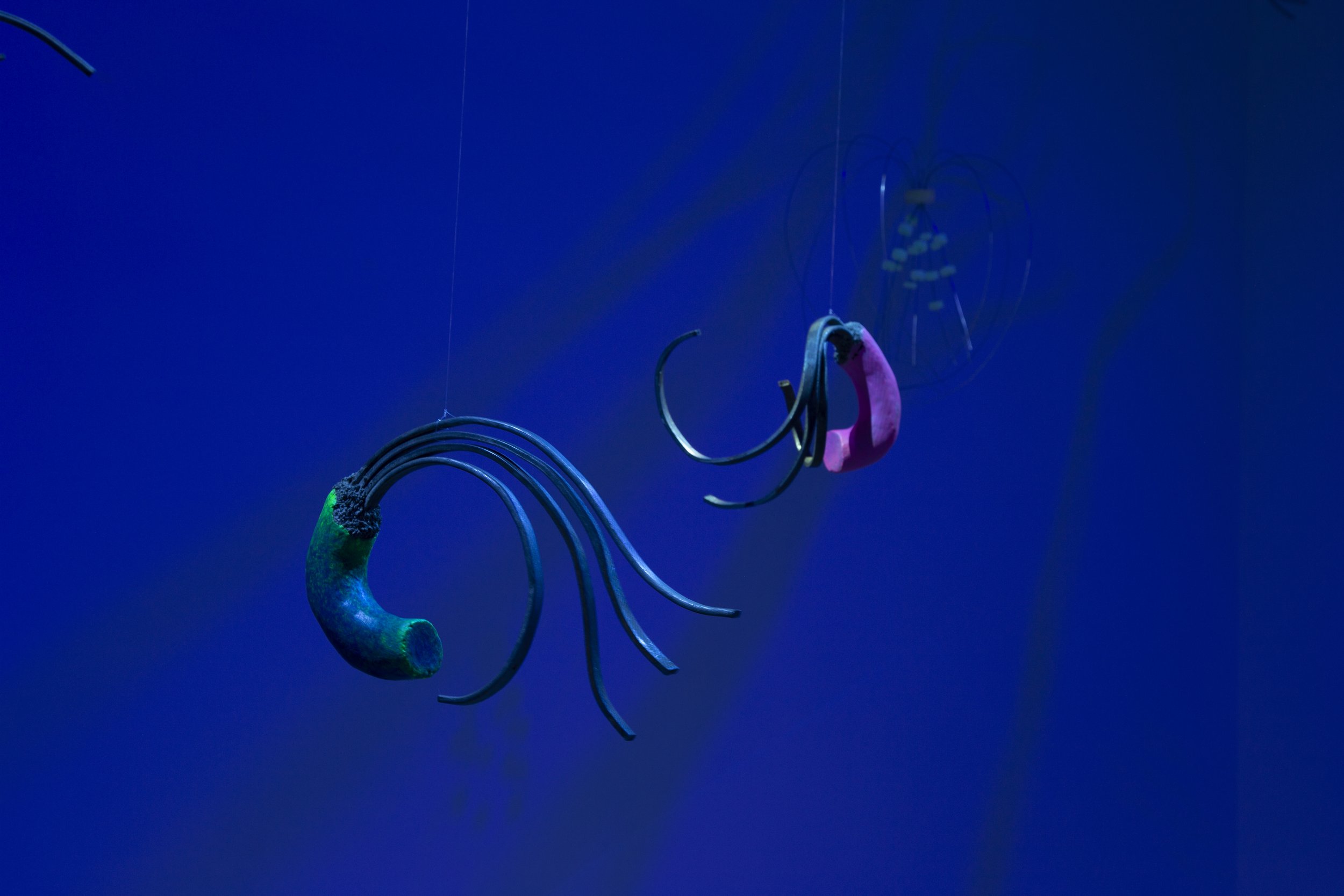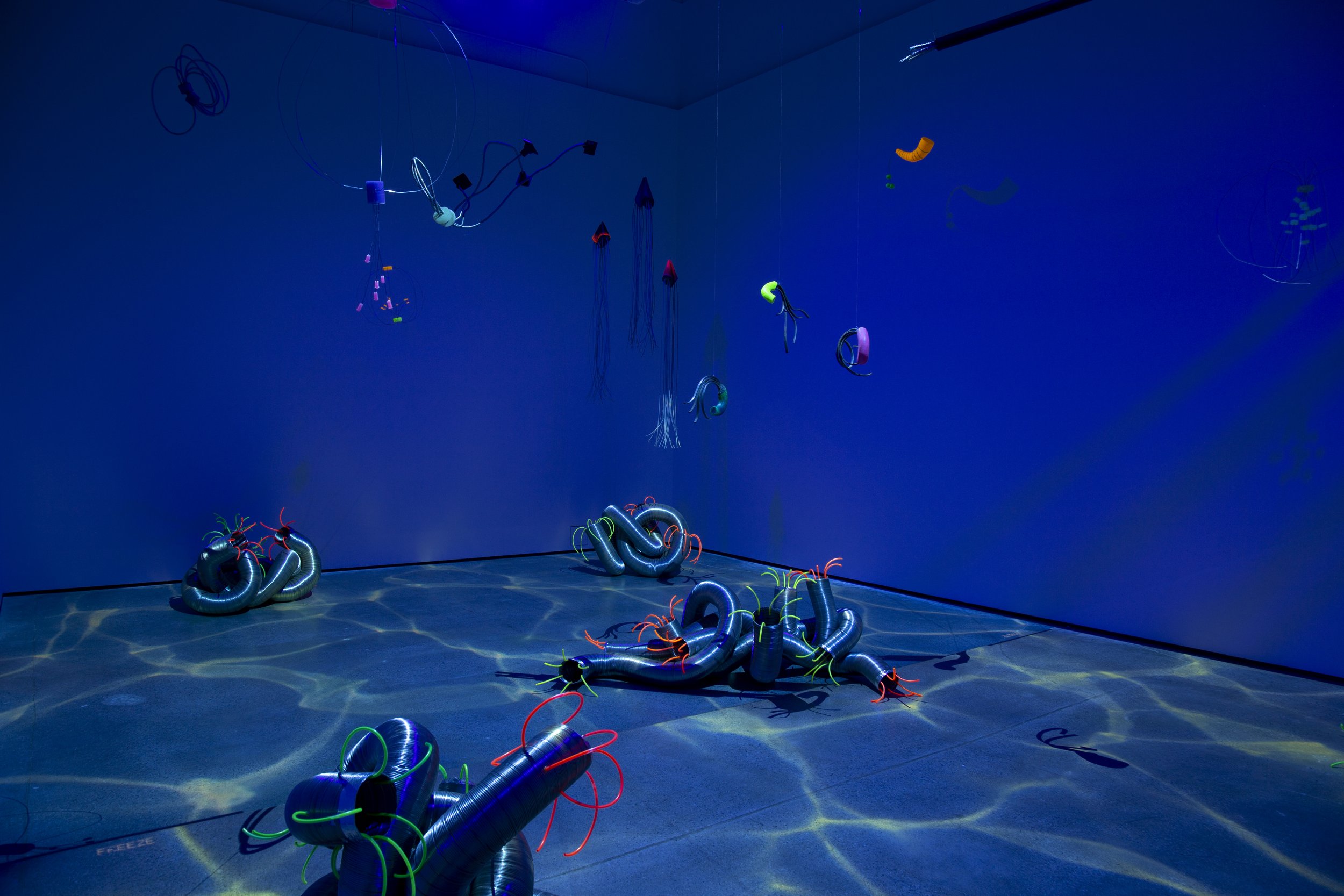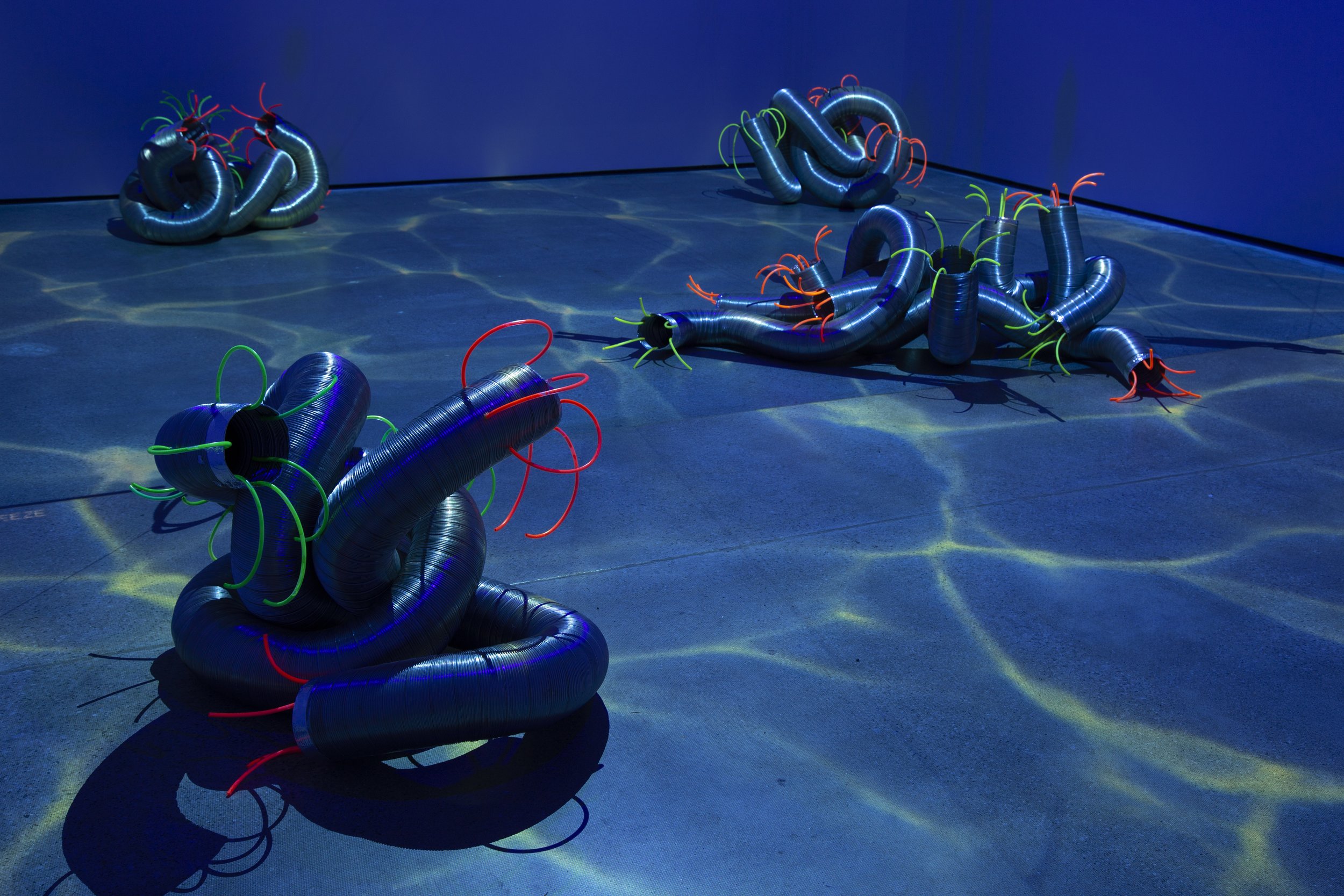Into the Uncanny Abyss
Humanity’s widespread impact on Earth is ubiquitous. Humans have altered the atmosphere, and the products and byproducts of our civilizations can be found in every corner of the planet. Attempting to adapt to the onslaught of these changes, nature is increasingly creating hybrid forms fusing the man-made and natural. Mollusks incorporating plastics into their shells, organisms evolving to tolerate former poisons, and animals using refuse to create their homes are just some of the ways nature has modified itself to survive. These hybrids—like many consumer products—are simultaneously compelling and toxic. Dr. Carol Boram-Hays, a CCAD associate professor, is inspired by these adaptations to create a vision of the ocean in the new age that scientists call the Anthropocene Epoch, this period in which human activity has started to have a major impact on our planet and its ecosystems. With sculptures created of twisted, reclaimed steel ductwork featuring flowerings of glow-in-the-dark appendages that suggest hybrid life forms, Dr. Boram-Hays has created work that seeks to communicate the uncanny reality of our new era, raise questions about what our future will hold, and suggest that nature will triumph long after humans are extinct.
Into the Uncanny Abyss
Works by Carol Boram-Hays

